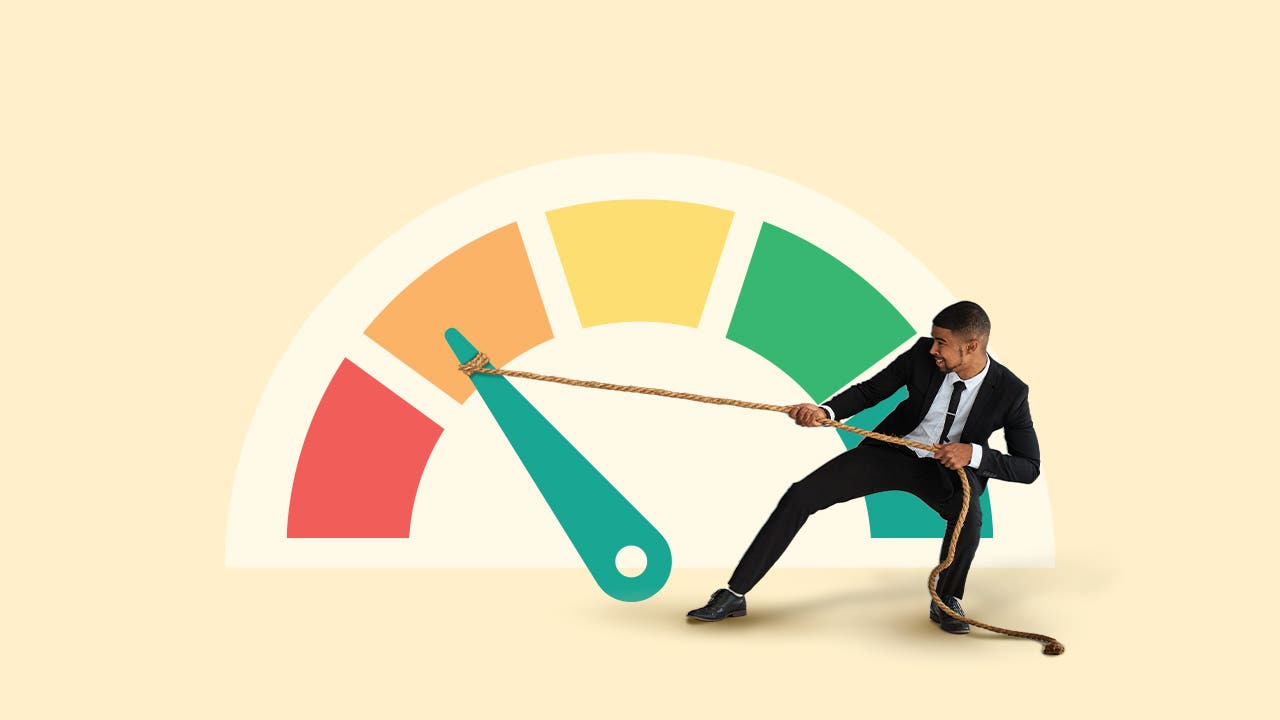How race impacts credit: the history and effect on lending practices




Key takeaways
- Lending discrimination is not new, but policies such as the Equal Credit Opportunity Act penalize lenders for discriminatory practices.
- Critics of current credit-scoring models argue that inputs such as income and homeownership still include racial bias.
- Communities of color often have less access to financial services for various reasons, many based in systemic oppression.
- These types of roadblocks can further limit these communities from accessing and building credit.
Credit scores help lenders assess someone’s risk of defaulting on borrowed money; in theory, the higher your credit score, the less of a risk you pose. High credit scores make accessing credit lines with better interest rates much easier. But is everyone treated the same in credit scoring?
According to a 2024 study by the Federal Reserve Board of Philadelphia, “minority applicants tend to have significantly lower credit scores, higher leverage and are less likely than white applicants to receive algorithmic approval from race-blind, government-automated underwriting systems (AUS).”
Understandably, this type of study raises the question of whether race plays a significant role in credit scores, and if so, how that affects the borrowing power of different ethnicities and racial groups.
A brief history of lending practices
In the past, it was legal for lenders to use gender and race to discriminate against people seeking financial services. For example, practices such as redlining — a discriminatory practice where institutions refused or withheld financial products, including credit cards and mortgages, from those living in financially “high-risk areas” — made it almost impossible for people of color to get any type of credit.
Lending practices changed due to the diligent work of activists, who inspired the laws that prohibit bias in lending. Both the Civil Rights Movement and the Women’s Movement contributed to anti-bias legislation in the 1960s and 1970s.
The Fair Credit Reporting Act (FCRA), passed in 1970, promotes the accuracy, fairness, and privacy of information in the files of consumer reporting agencies. The rights granted include the ability to:
- Be notified if information in your file has been used against you
- Know what is in your file
- Ask for your credit score
- Dispute incomplete or inaccurate information
- Correct or delete inaccurate, incomplete or unverifiable information
- Limit pre-screened offers of credit and insurance you get based on information in your credit report
- Place a security freeze on your credit report, prohibiting consumer reporting agencies from releasing information in your credit report without your express authorization
- Seek damages for violations.
The Equal Credit Opportunity Act (ECOA), which Congress passed in 1974, protects against discriminatory lending practices by prohibiting creditors from using factors including race, ethnicity, religion, age or gender to make lending decisions. Instead, creditors are required to use factors such as income, debt, recurring expenses and credit history.
The Fair Credit Billing Act (FCBA), also passed in 1974 as an amendment to the Truth in Lending Act, allows consumers to dispute credit card errors and requires lenders to provide credit card statements at least 21 days before payments are due, giving you the opportunity to review your credit card statement and dispute any errors.
The Credit Card Accountability Responsibility and Disclosure Act, passed in 2009, includes protections for the following aspects of credit:
- Interest rates
- Fees
- Billing protections
- Payment allocations
- Opt-out options
Finally, credit scores as we know them became commonplace in 1989 when FICO created its first credit-scoring model. Now, lenders use your credit score to determine approval for things including credit cards, mortgages and auto loans.
Though the government has enacted laws to keep discriminatory practices at bay, the long-term impact of past discriminatory practices and disparity in the lending industry continues.
What is a credit score?
Your credit score is a three-digit number that represents your creditworthiness.
Today, the two major credit scoring models are FICO and VantageScore. FICO is by far the most popular, with 90 percent of lenders using the scoring model. Both FICO and VantageScore use information collected by the three credit bureaus (Experian, Equifax and TransUnion) to determine your credit score. This number affects your ability to get a credit card, loan or mortgage and also determines the terms and interest rates on what you borrow.
Below is a breakdown of the different scoring models and credit ranges:
FICO credit scores

VantageScore credit scores

Does race affect your credit score?
Due to protections outlined in the ECOA, race is one of many factors prohibited from influencing credit scores. Instead, elements that go into calculating your credit score include your payment history, amounts owed, length of credit history, credit mix and new credit.
But while race cannot legally affect credit scores, credit score disparities still exist among various racial groups. In 2021, the Urban Institute collected a series of statistics that indicate white communities have the highest median credit score at 727, which falls well into the good range of both the FICO and VantageScore models. Native American communities have the lowest median credit score at 612, hovering in the fair range for both scoring models.
Credit score averages for Black and Hispanic communities fall somewhere in the middle. The average score for Hispanic communities reaches into the good range at 667, and the average score for Black communities reaches 627, in the middle of the fair range.
Credit score averages
| Racial group | Median credit score |
| Black | 627 |
| Hispanic | 667 |
| Native American | 612 |
| White | 727 |
A host of systemic issues point to why these score disparities may exist. Black Americans are often well behind white Americans in generational wealth, due to the country’s history of slavery and segregation practices. Many Native American communities have experienced historic forced migration and land displacement, among other issues. Today, Native Americans who live on reservations often have limited access to financial institutions.
Hispanic, immigrant and refugee communities also tend to have less access to financial services, compared to white communities. Some other examples that can hinder many marginalized people from building credit include:
- Language barriers
- Employment discrimination
- Decreased access to online financial services
- Lack of financial institutions in rural and low-income areas or “banking deserts“
- Tribal trust laws
VantageScore and FICO both state on their websites that they do not include race as a factor when calculating credit scores. However, lenders can access your personal information on loan and mortgage applications, which may lead to discriminatory practices.
How race influences credit card practices
Discriminatory lending practices are hard to pin down. A lender may not directly look at race to decide whether someone can receive financial services, but that doesn’t mean it can’t come into play.
An article in the March-April 2024 issue of the Journal of Economics and Business analyzed exactly who is paying the most when it comes to credit card and banking fees. Authors Oz Shy and Joanna Stavins studied data on myriad fees paid by consumers on bank accounts and credit cards from the 2021 Survey and Diary of Consumer Payment Choice (SDCPC).
“We find that lower-income and Black consumers are significantly less likely to have a bank account or a credit card than other consumers. Among bank account or credit card holders, the probability of paying some types of fees is correlated with consumers’ demographic attributes and payment behavior,” write the authors.
A major impediment to obtaining affordable credit is lenders’ reliance on traditional credit scores — those from FICO and VantageScore — to assess consumers’ creditworthiness, according to a Federal Reserve Kansas City study, “Addressing Traditional Credit Scores as a Barrier to Accessing Affordable Credit.”
“While these credit scores are intended to help lenders make informed decisions about consumers’ risk of default, they do not always accurately reflect a borrower’s ability to repay,” writes study author Ying Lei Toh, a senior economist at the Fed Kansas City.
Traditional credit scores persistently penalize borrowers who have experienced derogatory credit events such as delinquencies, even when it’s no longer indicative of an ability to pay. Credit scores may also disproportionately punish economically disadvantaged consumers because it can be harder for them to get their first line of credit, as account age and length of payment history are major factors in scoring models.
Lenders’ heavy reliance on traditional credit scores for credit underwriting may prevent some consumers from obtaining affordable credit — or discourage them from applying in the first place, says Toh. But even after receiving credit scores, minority consumers tend to have lower scores due to younger accounts, shorter payment histories, higher credit utilization rates (due to lower credit limits) and a larger number of recent account applications.
How to build your credit score
If you’re interested in building credit, you have more than a few ways to get started. Applying for a credit card or a personal loan are two of the more common ways to work toward building your credit score, but they aren’t the only options. Here are some other ways to help build your credit score.
Try a credit builder loan
If you have poor or no credit, lenders like Credit Karma, Self, CreditStrong and MoneyLion may be willing to offer a credit builder loan intended specifically to help people build their credit. Once you have approval for a credit builder loan, your bank will deposit an approved loan amount into an interest-building savings account.
You’ll make monthly payments for an agreed-upon term to pay off the loan. At the end of the term, you receive the loan’s funds, minus any fees. Each payment you make on your loan will directly impact the payment and credit history factors in your credit report.
Become an authorized user
If you can’t — or aren’t ready — to get a credit card in your own name, you may be able to build your credit by becoming an authorized user on someone else’s card. Make sure the primary cardholder is someone you trust and who already has a solid history of good credit practices. If you or the main cardholder overspend or default on the card payments, you will both see a hit to your credit scores.
Tap into alternative reporting data
Paying off your credit card or loan isn’t the only way you can build your credit score. With programs such as Experian Boost and ultraFICO, reporting agencies will add your bill payments to your credit report to help your score. To get started with these programs, create an account with your program of choice and document the other financial activity you’d like to include in your reporting, such as your cellphone bill, utility bills and rent payments.
More credit resources
The knowledge you need to have a more successful and fulfilling financial future is out there, no matter your background. If you want to learn more about finances, get started building credit for the first time or if you’re ready to start over, these resources could come in handy:
- Search for accredited, reliable credit counselors at the National Foundation for Credit Counseling.
- Look for a Financial Empowerment Center (FEC) in your area. FECs offer free professional, one-on-one financial counseling as a public service.
- Research consumer experiences with financial services companies through the Consumer Complaint Database from the CFPB.
- Access your free credit report weekly from all three credit bureaus and get a look at where you stand.
- Explore specialized financial education tools and resources for multilingual communities, newcomers, Native communities, people with disabilities and more.
The bottom line
While biases in the financial sector exist, you can still control some factors in your credit score. Actions such as paying your bills on time and keeping your debt low have some of the biggest impacts, but it also helps to regularly check your credit history to ensure no surprises have shown up on your credit report.
Protections such those afforded by the Equal Credit Opportunity Act give you support when making a report about lenders that are being unfair in how they offer financial services.
Ultimately, one of the best ways to combat racial inequality and close the racial wealth gap is to arm yourself with knowledge. Lending practices over the years have gone through many changes. While people of color still face real issues when it comes to discrimination, protections do exist to help address them.
Frequently asked questions
For more information, go to Bankrate’s Credit page, which covers everything from credit repair companies to scores.
Why we ask for feedback Your feedback helps us improve our content and services. It takes less than a minute to complete.
Your responses are anonymous and will only be used for improving our website.
You may also like

Cosigner rights & responsibilities: How cosigning works

Will an emergency loan impact my credit?

What is housing discrimination?


